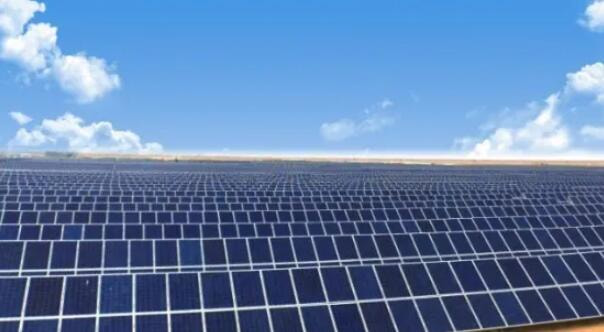Basic Knowledge of Photovoltaic Power Generation Equipment
Photovoltaic power generation overview
The basic principle of solar photovoltaic power generation is a power generation method that uses the photovoltaic effect of solar cells to directly convert the sun's radiant energy into electrical energy. The energy converter of solar photovoltaic power generation is a solar cell, also called a photovoltaic cell. When sunlight shines on a solar cell composed of two homogeneous semiconductor materials of different conductivity types, P and N, part of the light is reflected, part of the light is absorbed, and part of the light passes through the cell. The absorbed light energy excites the bound electrons in a high-energy state to generate electron-hole pairs. Under the action of the built-in electric field of the PN junction, the electrons and holes move with each other, and the holes in the N region move toward the P region. The electrons in the P region move to the N region, causing a large amount of negative charges (electrons) to accumulate on the light-receiving surface of the solar cell, while a large amount of positive charges (holes) accumulate on the backlight side of the battery. If a load is connected to both ends of the battery, current will flow through the load. When light is continuously shining, current will continue to flow through the load.

A single-chip solar cell is a thin semiconductor PN junction. Under standard lighting conditions, the rated output voltage is 0.48~0.55V. In order to obtain higher output voltage and larger power capacity, in practical applications, multiple solar cells are often connected together to form a battery module, or more battery modules are used to form a photovoltaic array. The output power of solar cells is random and different. The output power of the same solar cell is also different at different times, locations, and installation methods.
Advantages of photovoltaic power generation
Solar energy is inexhaustible and the solar radiation received by the earth's surface can meet 10,000 times the global energy demand. As long as solar photovoltaic systems are installed on 4% of the world's deserts, the electricity generated can meet global needs. Solar power is safe and reliable and will not suffer from energy crises or fuel market instability.
Solar energy can be obtained anywhere and can provide power nearby without having to transmit it over long distances, thus avoiding the loss of long-distance transmission lines;
Solar energy requires no fuel and has very low operating costs;
Solar power generation has no moving parts, is not easy to be damaged, and is easy to maintain. It is especially suitable for unattended use;
Solar power generation does not produce any waste, has no pollution, noise and other public hazards, and has no adverse effects on the environment. It is an ideal clean energy source;
The construction period of the solar power generation system is short, convenient and flexible, and the amount of solar arrays can be added or reduced at will according to the increase or decrease of the load to avoid waste.
Disadvantages of photovoltaic power generation
Ground application is intermittent and random, and the power generation is related to climatic conditions. It cannot or rarely generates power at night or on cloudy and rainy days;
The energy density is low. Under standard conditions, the solar radiation intensity received on the ground is 1000W/M^2. When used in large sizes, a larger area is required;
The price is relatively expensive, 3 to 15 times that of conventional power generation, and the initial investment is high.
The later investment is relatively large, and the energy storage battery needs to be replaced every 2-3 years on average.
Photovoltaic power generation applications
Applications in the field of communications: including solar unattended microwave relay stations, optical cable communication systems and maintenance, mobile communication base stations, etc.
Applications in the fields of highway, railway, and shipping transportation: such as railway and highway signaling systems, railway signal lights, traffic warning lights, signal lights, highway monitoring systems, navigation light beacons, and navigation light power supplies, etc.
Applications in the fields of petroleum, ocean and meteorology: oil drilling platform life and emergency power supply, ocean detection equipment, meteorological and hydrological observation equipment, observation station power supply, etc.
Application in rural and remote areas without electricity: Solar photovoltaic household systems are applied in rural and remote areas such as plateaus, islands, pastoral areas, and border posts to solve the problem of electricity consumption in daily life.
Application of solar photovoltaic lighting: Solar photovoltaic lighting includes solar street lights, garden lights, lawn lights, as well as household lighting tools and portable lights, camping lights, energy-saving lamps, flashlights, etc.
Application of large-scale photovoltaic power generation systems (power stations): Large-scale photovoltaic power generation systems (power stations) are 100kW~50MW ground independent or grid-connected photovoltaic power stations, wind and solar complementary power stations, various large parking lot charging piles, etc.
Solar photovoltaic building-integrated grid-connected power generation system: Combining solar power generation with building materials, making full use of the roof and facade of the building, enabling large buildings to achieve self-sufficiency in power and grid-connected power generation.
Applications in other fields: including solar electric vehicles, electric bicycles, battery charging equipment, desalination system power supply, satellites, spacecraft, space solar power stations, etc.



